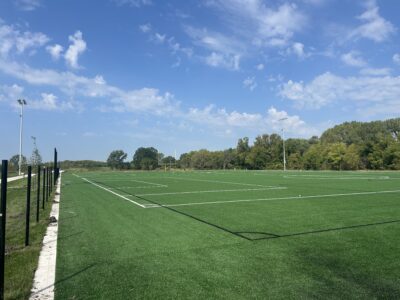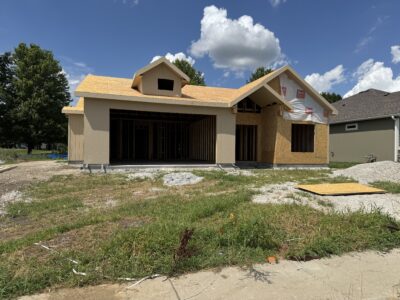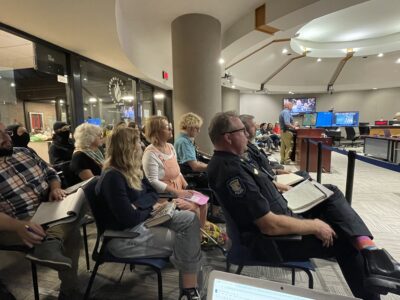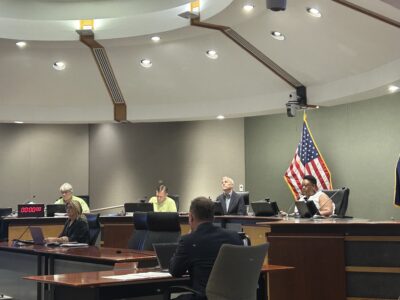Birds by the thousands fill trees
‘It’s a phenomenon. It’s an extraordinary event’

Thousands of robins and cedar waxwing birds roost Tuesday south of Langston Hughes School, near the western end of Bob Billings Parkway. The influx of birds has attracted the attention of KU ornithologists, who are studying the phenomenon.

The unseasonal influx of robins has attracted the attention of KU ornithologists.
Birds — mostly robins by the thousands — are making a daily evening trek to extreme western Lawrence where they roost in cedar trees for the night.
It is a thrilling spectacle for neighbors in the area of George Williams Way, Diamondhead Drive and other nearby streets.
“I love it. I love robins. I think it’s great,” said Don Bushell, one of those residents.
That many birds can announce their presence if windows happen to be open, as Celia Heintz found out.
“It was 70 (degrees) out last week. I had the windows open and there was chirping beyond belief,” she said.
The birds come in during their own version of rush hour, starting about 4:30 p.m. and show up in increasing numbers for about an hour, Bushell and Heintz said. They are going to the trees in a still untouched greenbelt in the area.
The flock also attracted the attention of Kansas University experts.
“We’ve been out there several times to try to get a handle on what’s going on,” said Mark Robbins, ornithologist at KU’s Natural History Museum. “We feel there are probably well over 100,000 robins coming in there, mainly around 5 p.m.”
In addition to the robins, there are about 1,000 cedar waxwing birds flying in, Robbins said. A few bluebirds also have been seen.
“It’s a phenomenon. It’s an extraordinary event,” Robbins said. “It’s an amazing stream of birds.”
The best place to see the birds come in is at the western end of Bob Billings Parkway, Robbins said.
The birds are attracted to the cedar trees as a roosting and food source. They eat the cedar berries, Robbins said. He and neighbors say the roosting has been going on for at least three weeks and maybe all winter.
Even considering the interest in the cedar trees, it is unusual to see such a large number of birds congregate in one place, Robbins said. The birds start flying off at the first signs of dawn, he said.
Heintz and Bushell have lived in the area for only a couple of years but they said they had not seen the bird flocks before this year.
Many of the birds are getting killed in collisions with vehicles on West Sixth Street as it turns into U.S. Highway 40, Robbins said.
“They are getting hit by cars by the dozens. It is really taking a toll on the robin population,” he said.
The birds don’t represent a threat to humans, however, Robbins said. And the birds will probably be gone when spring arrives, he said.







